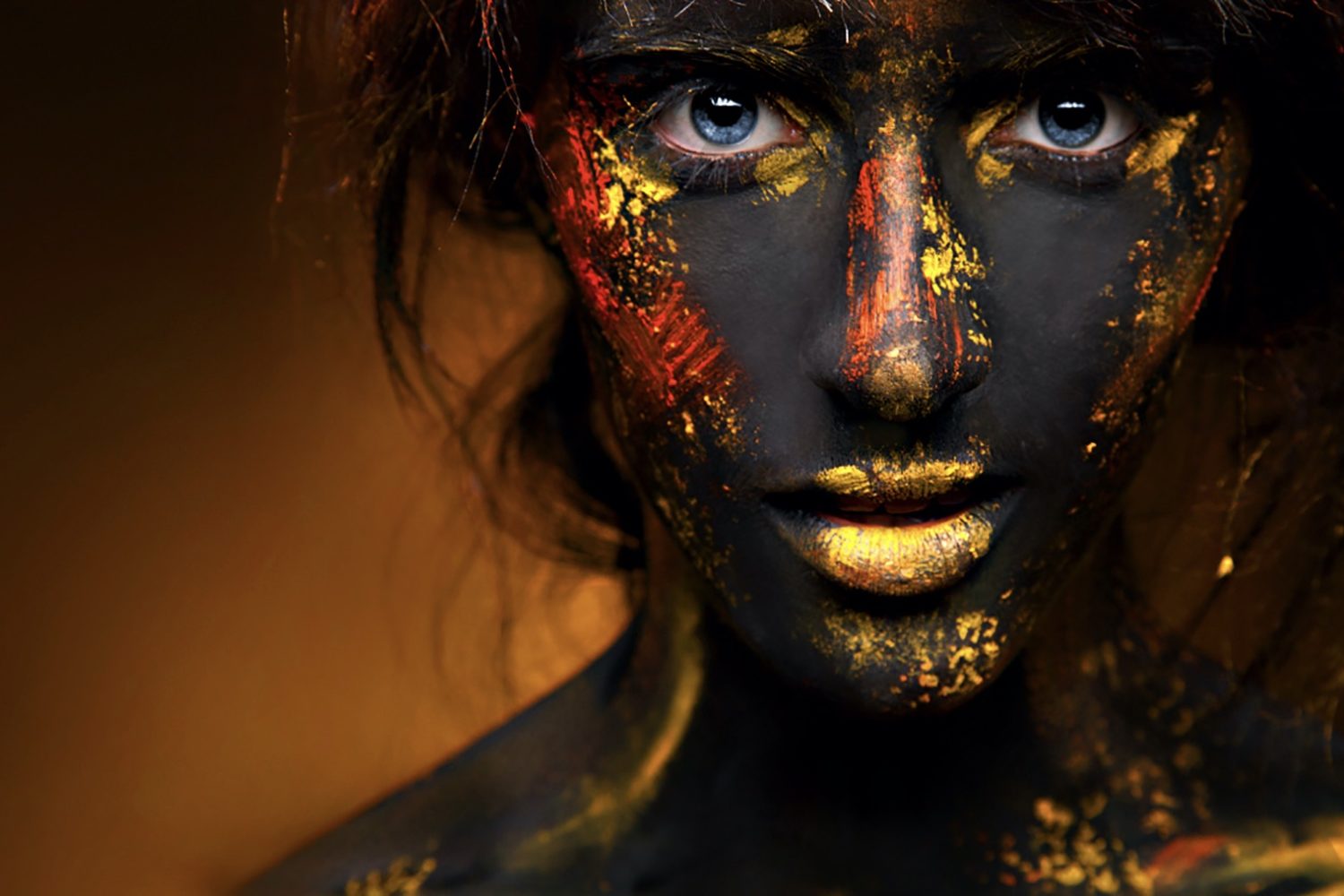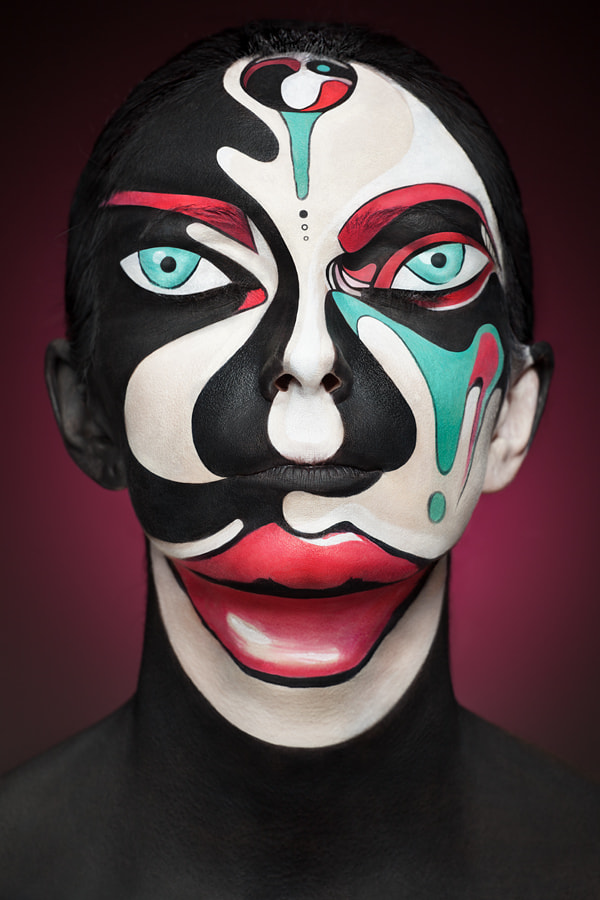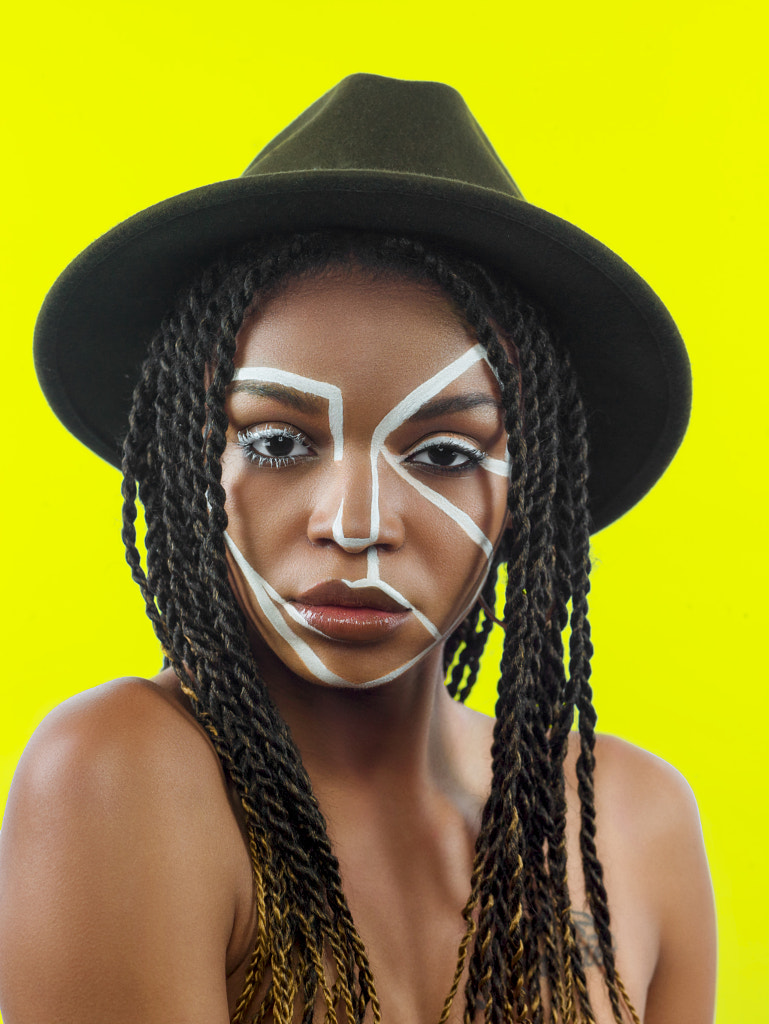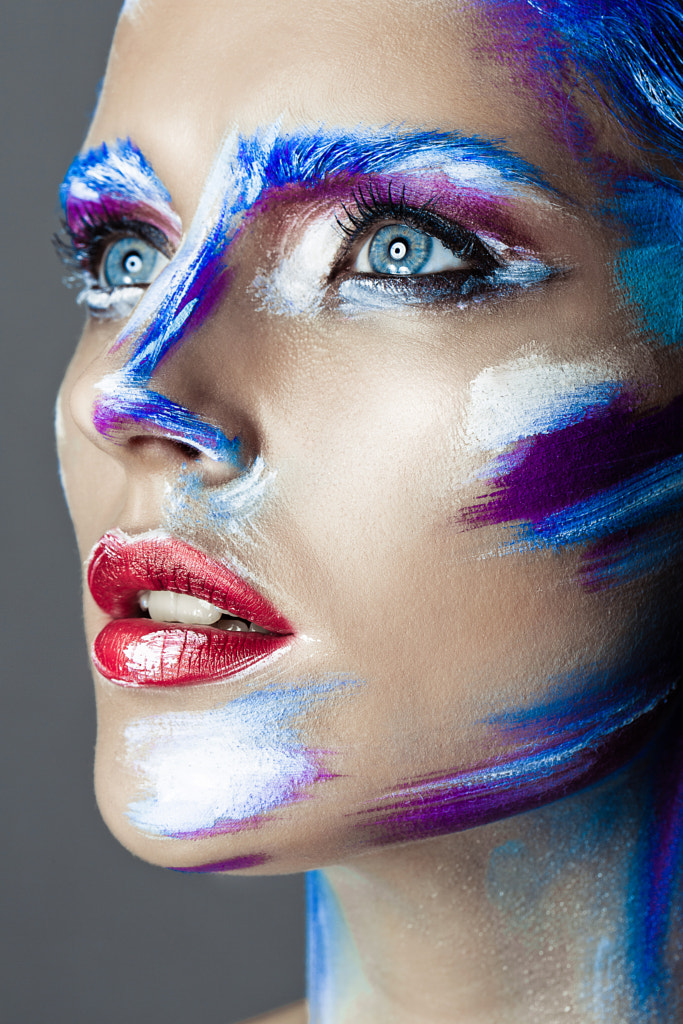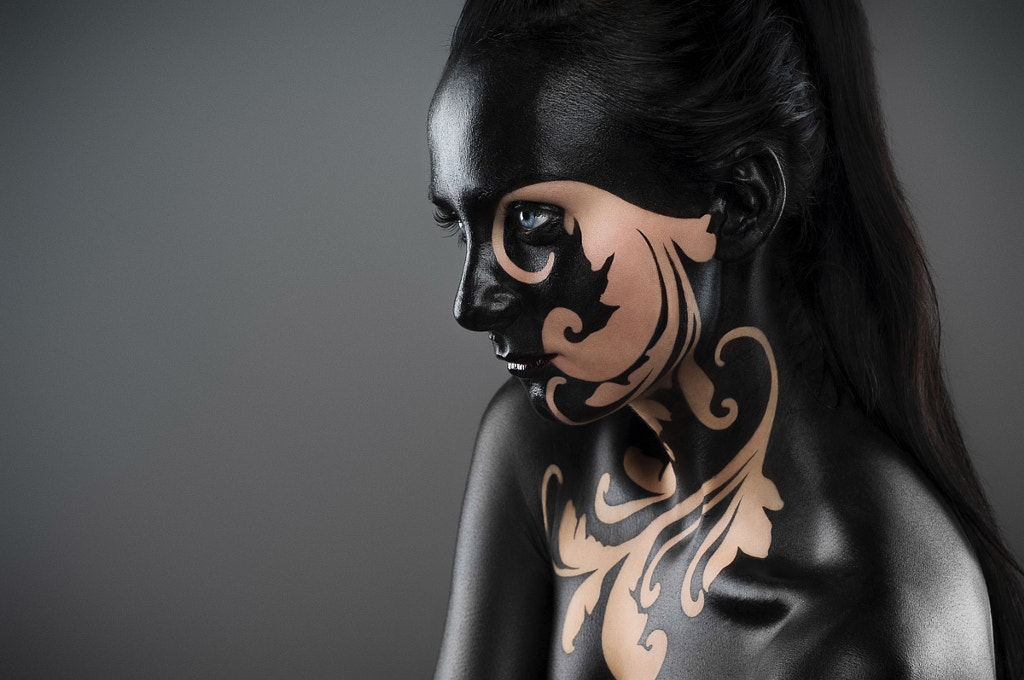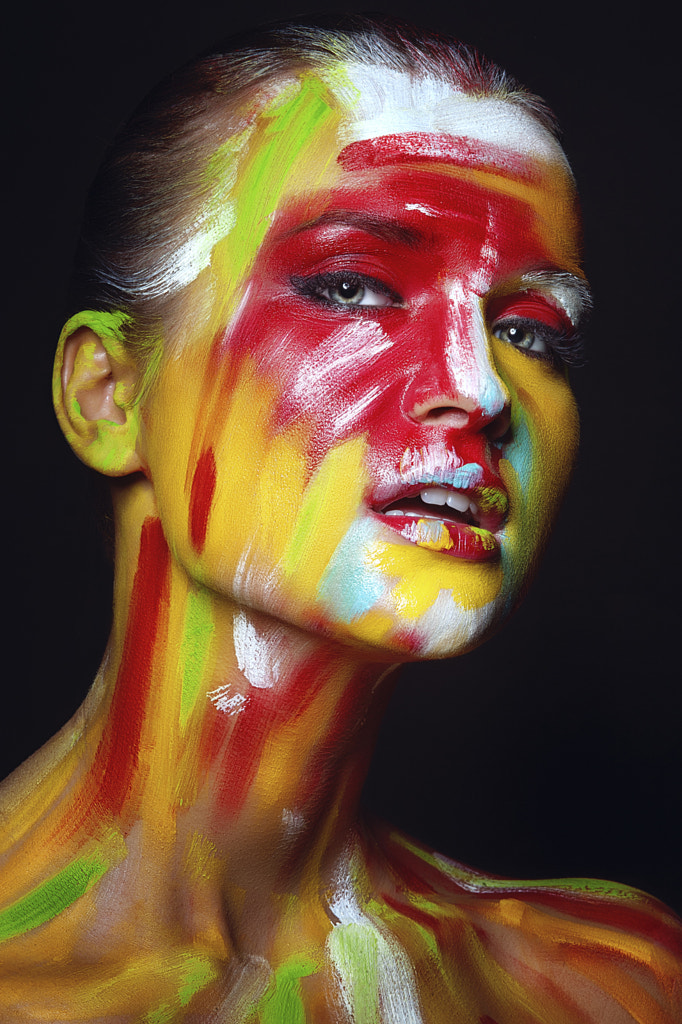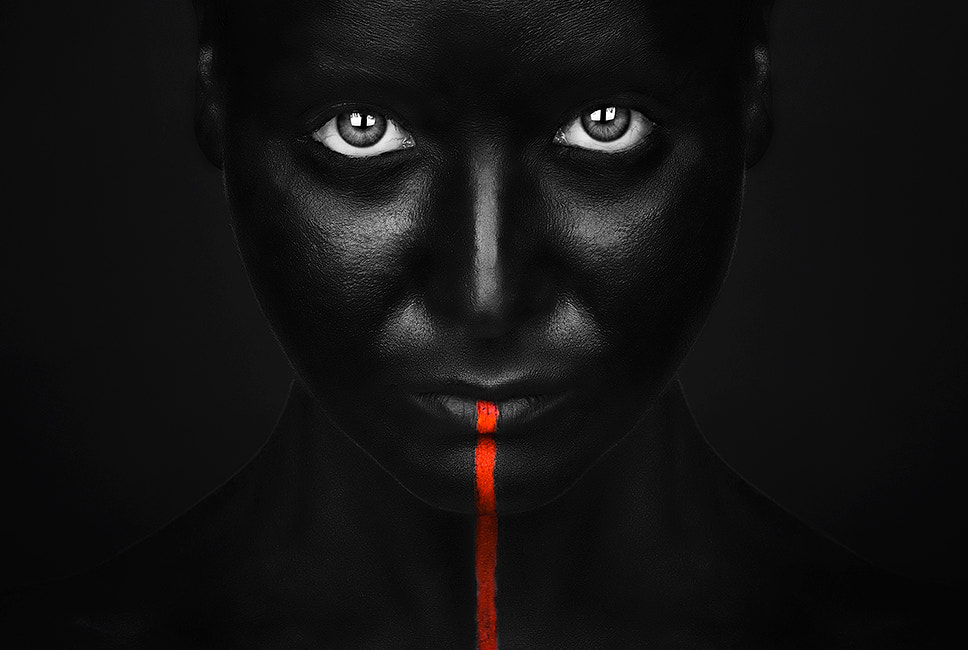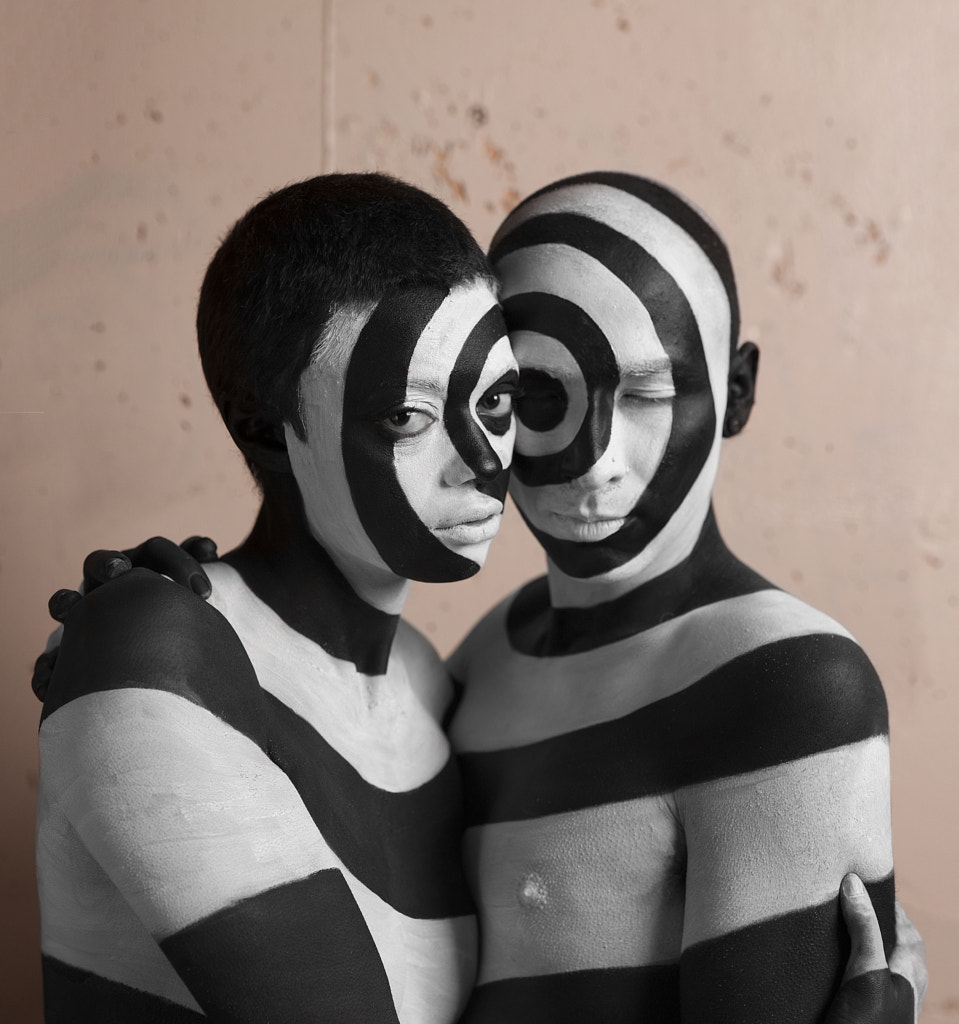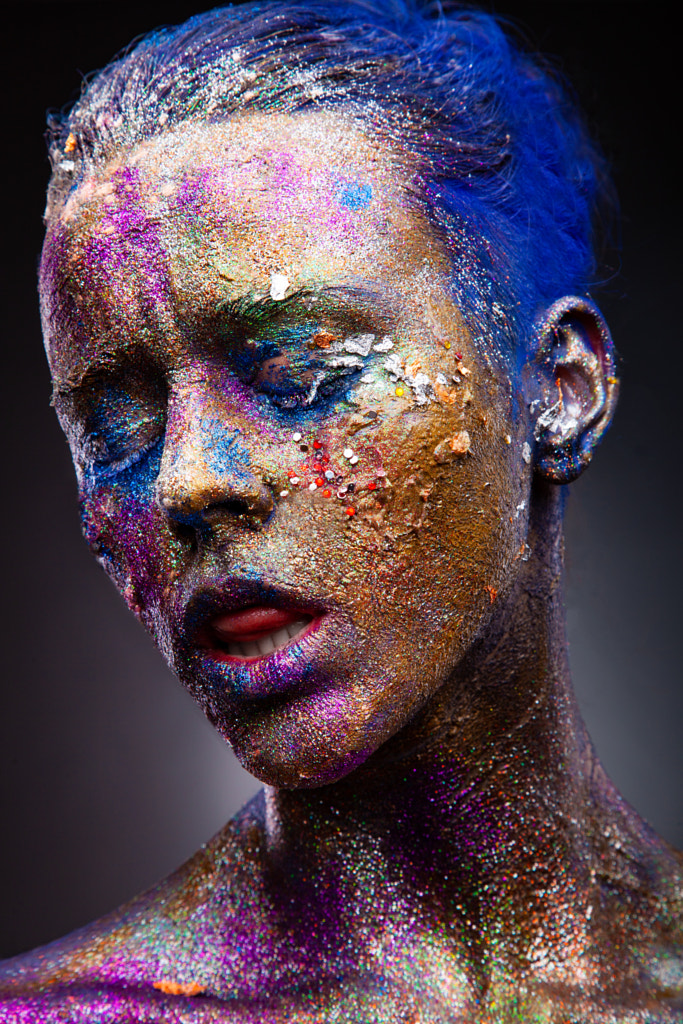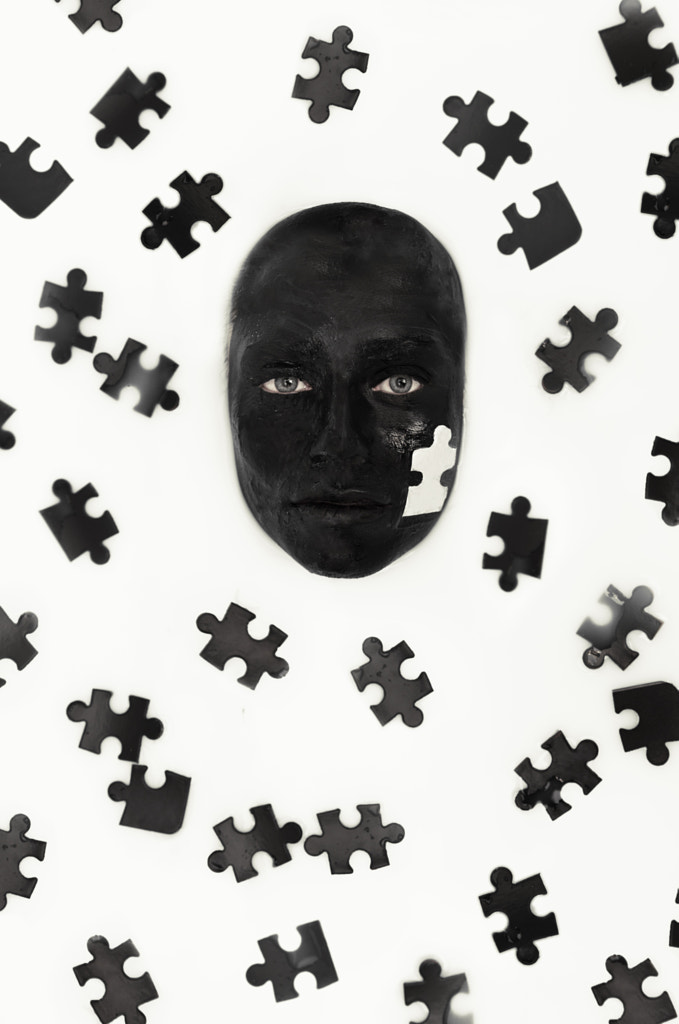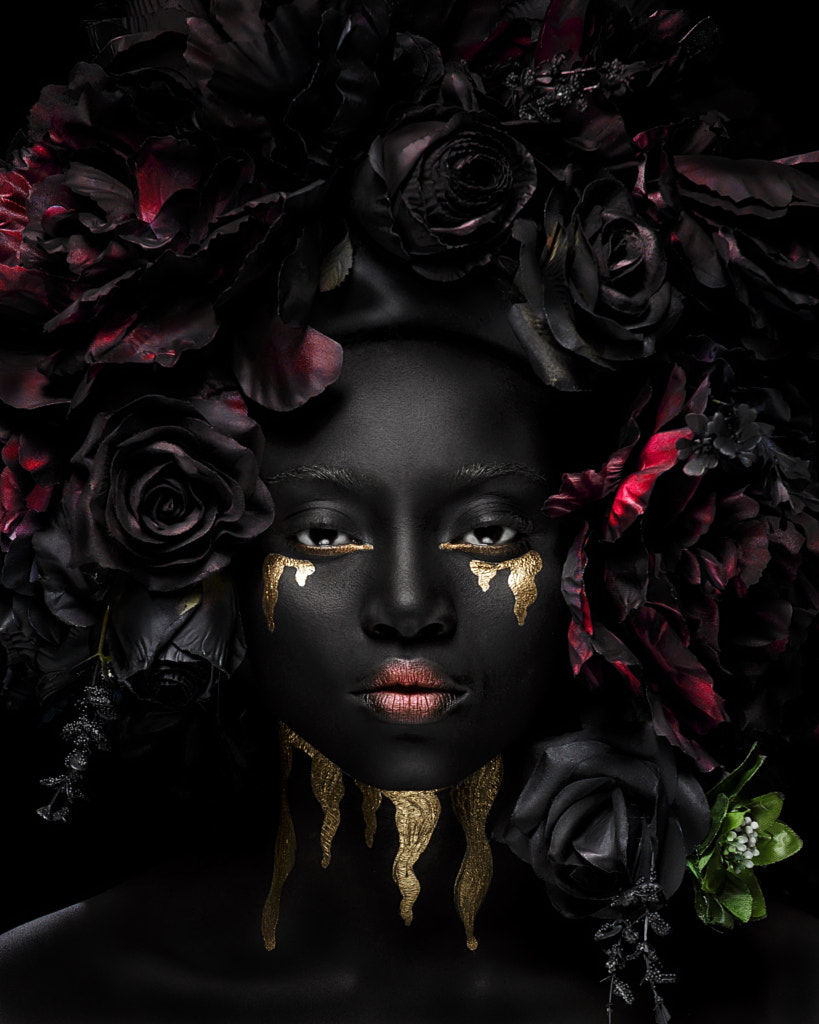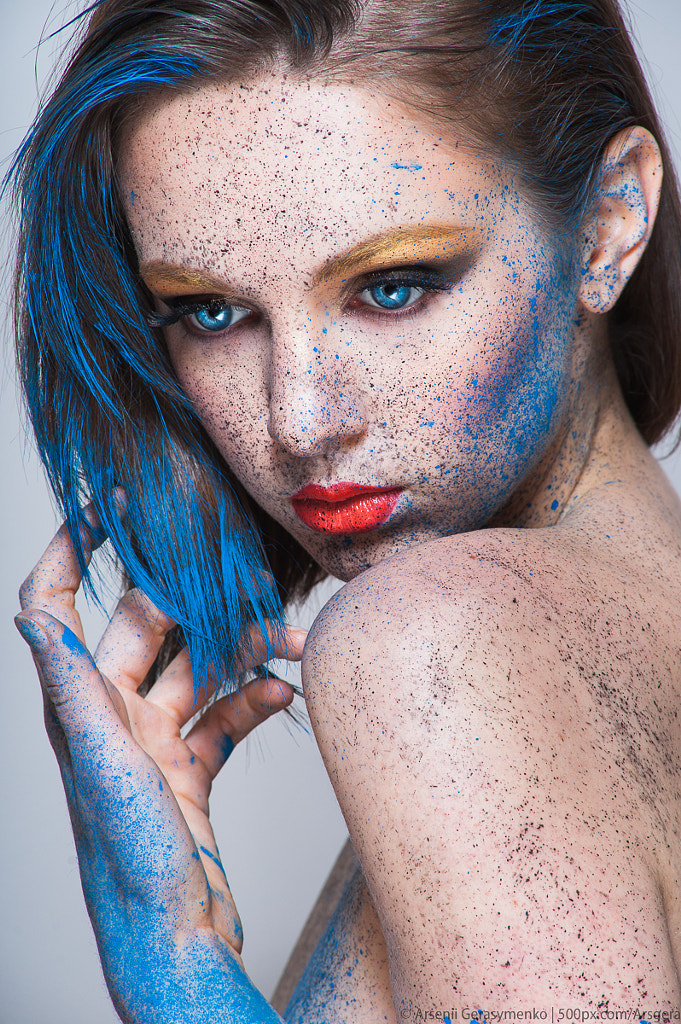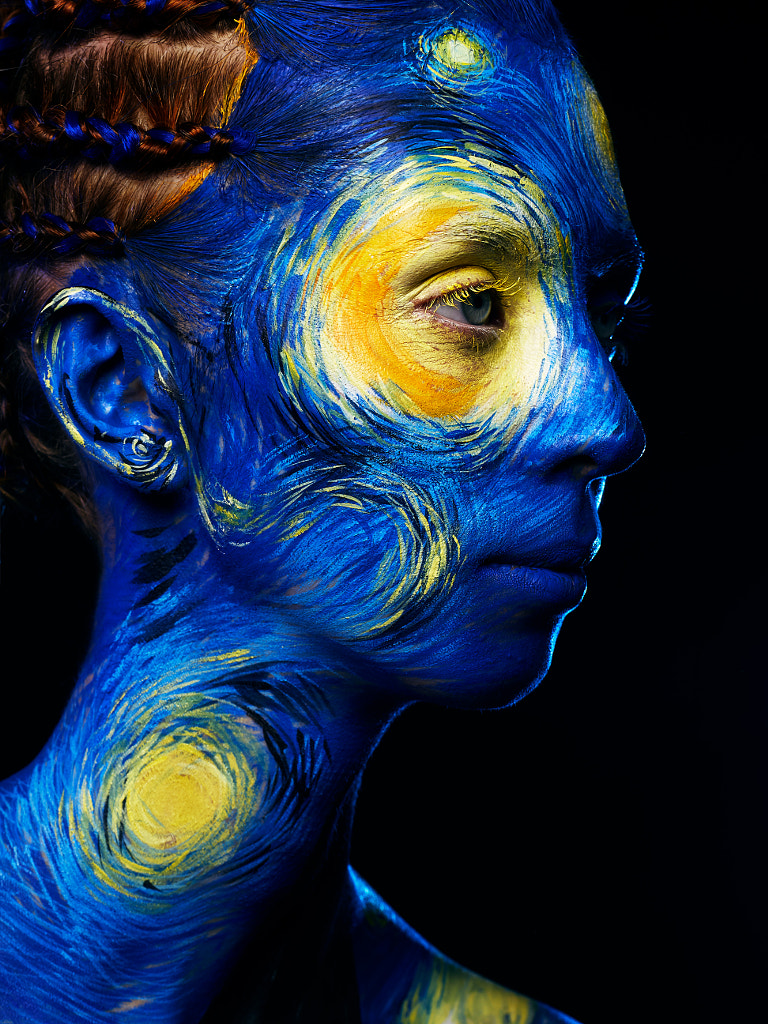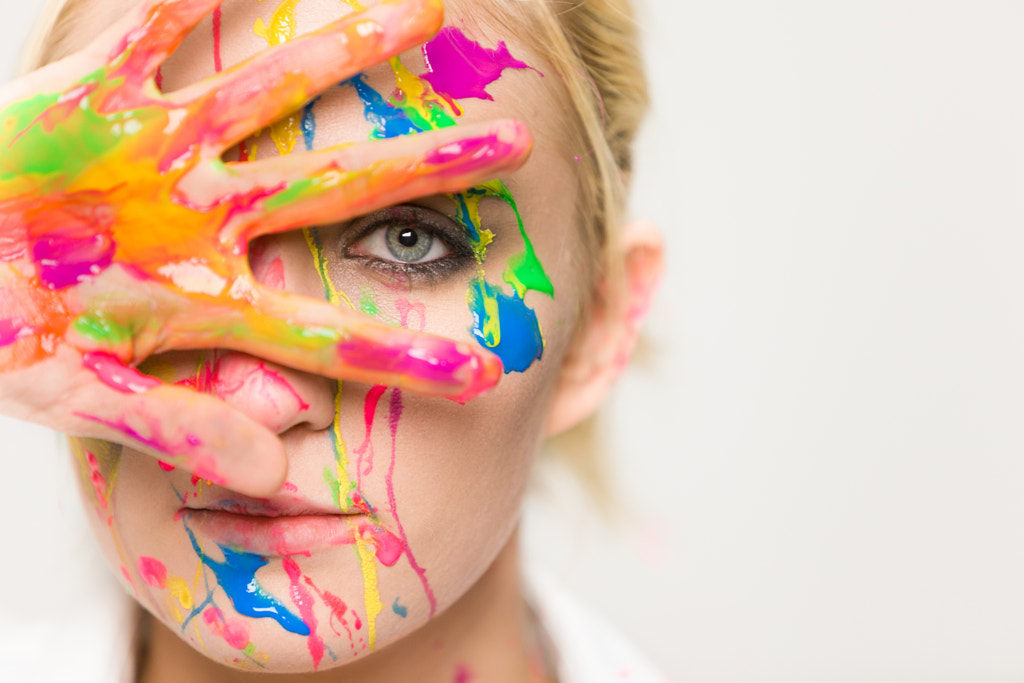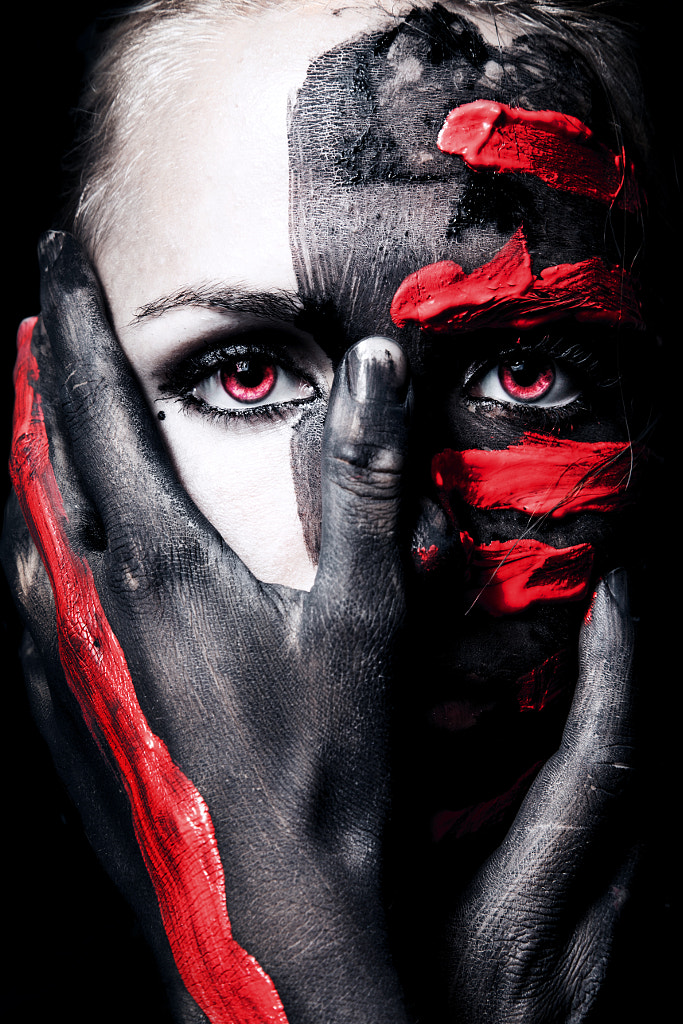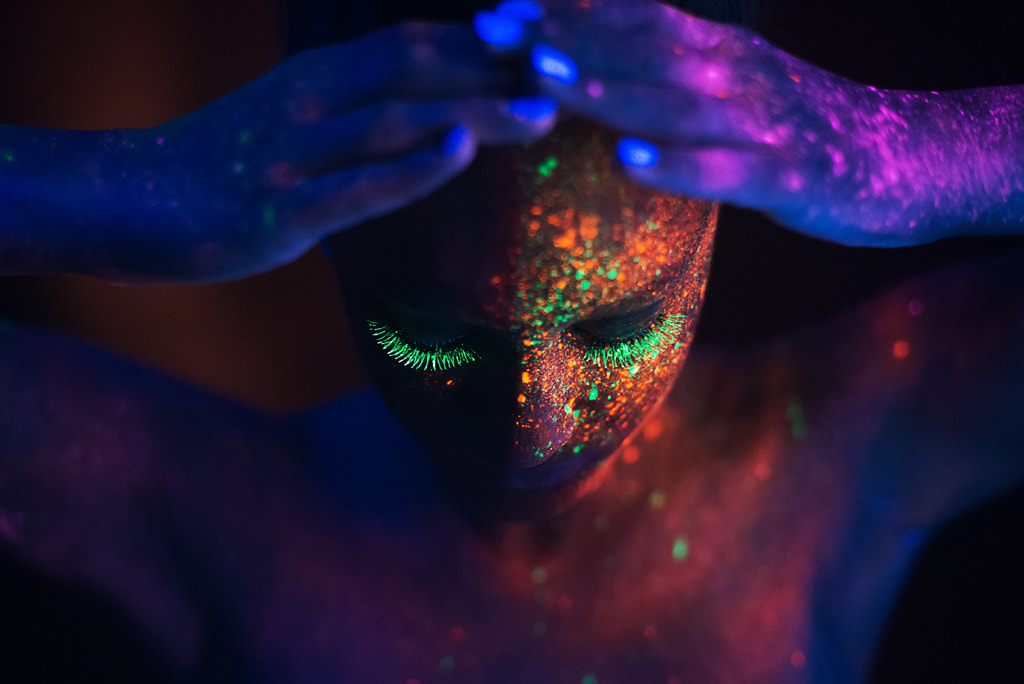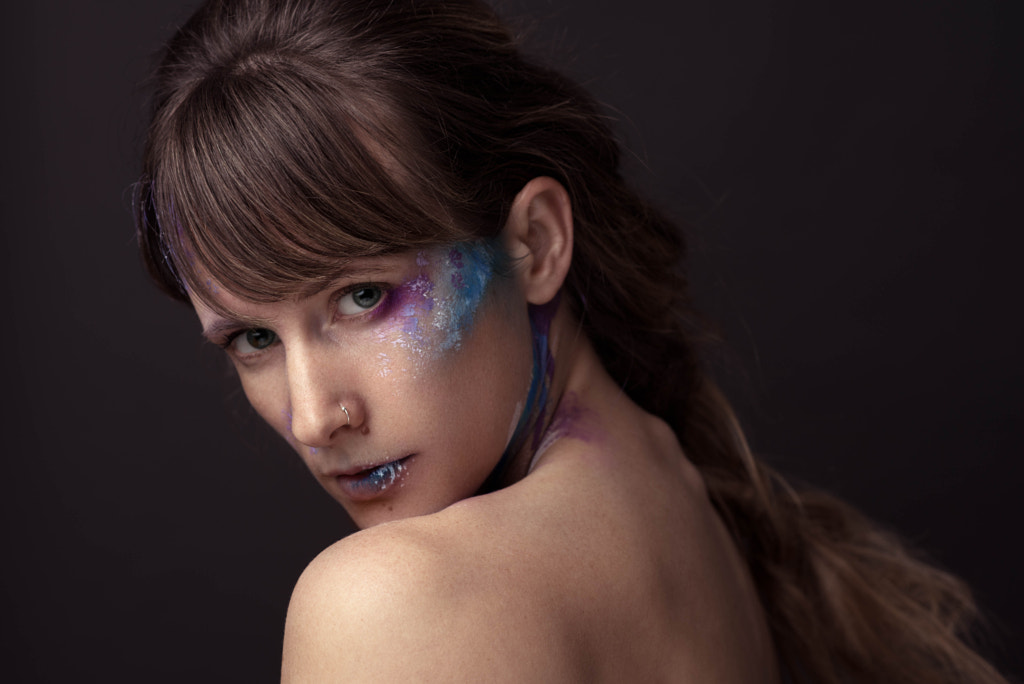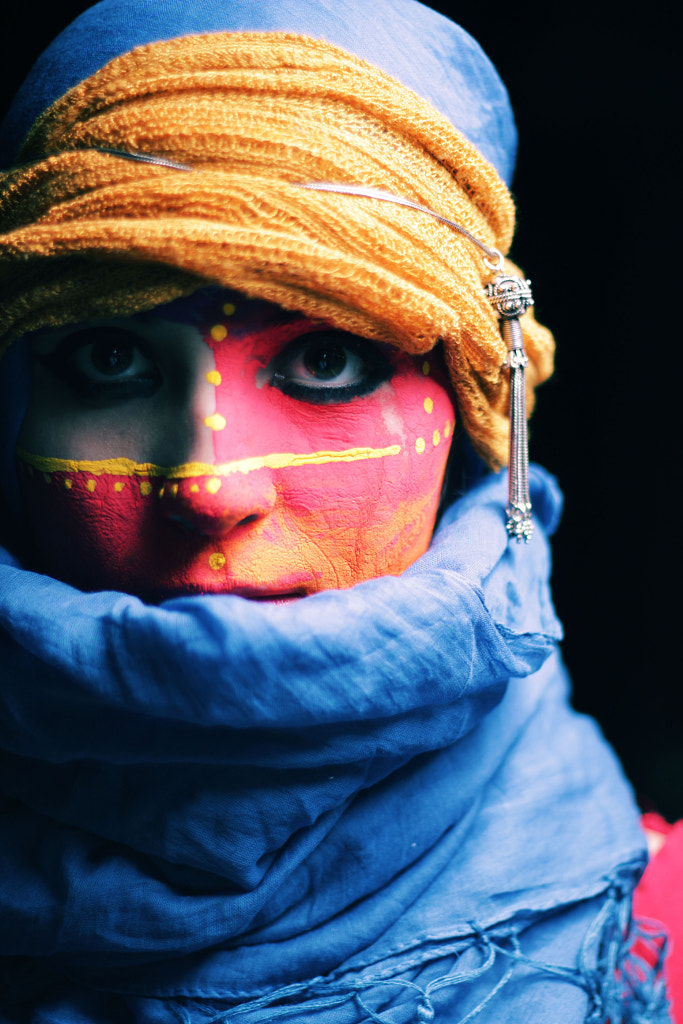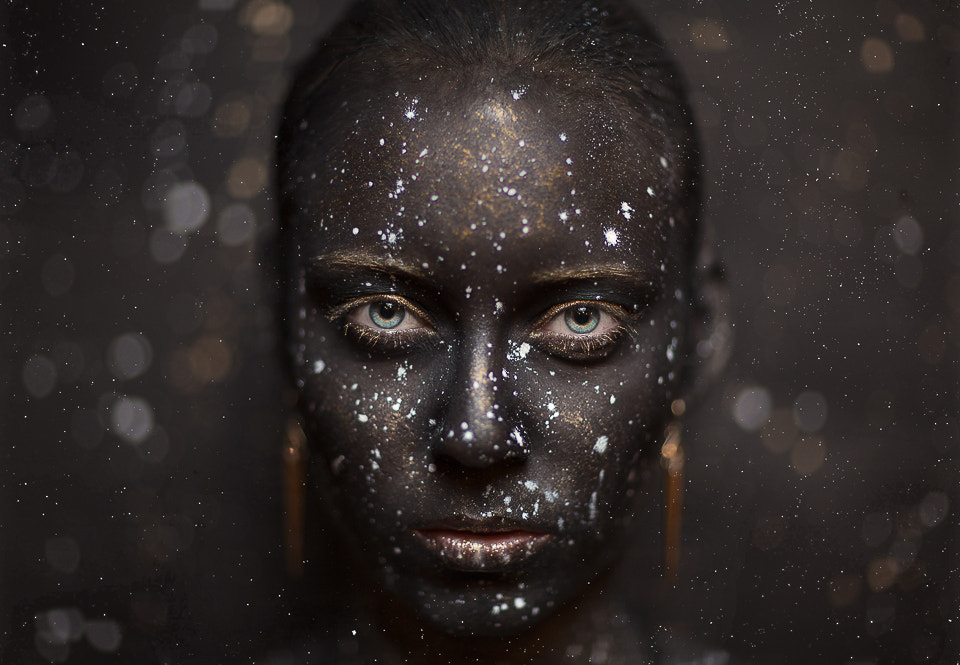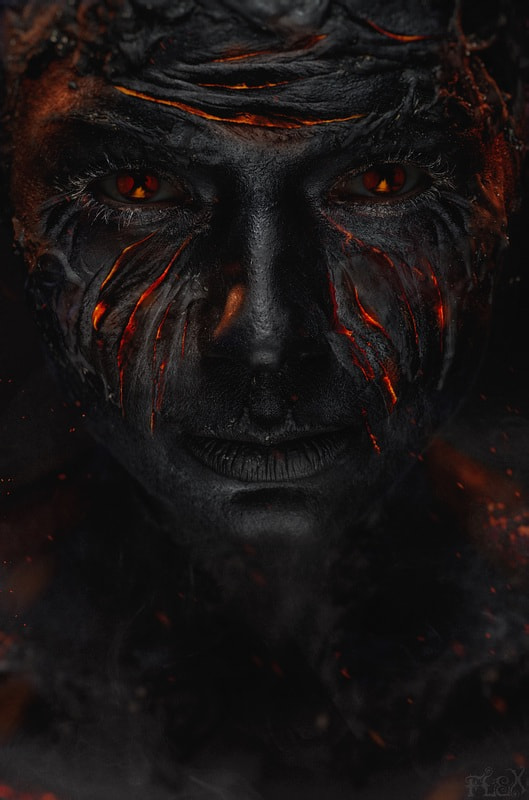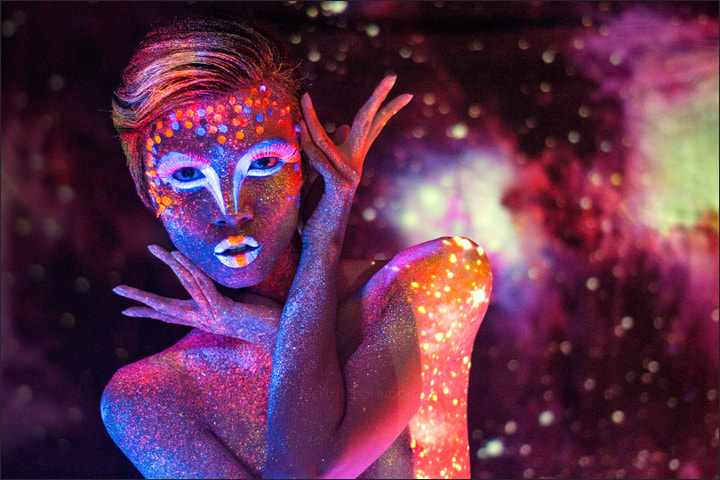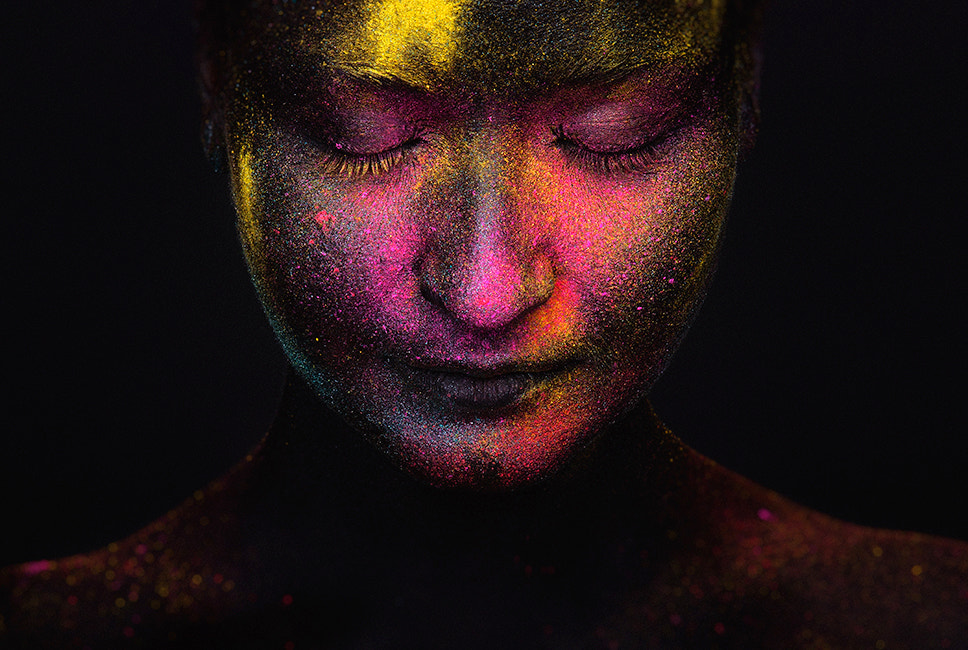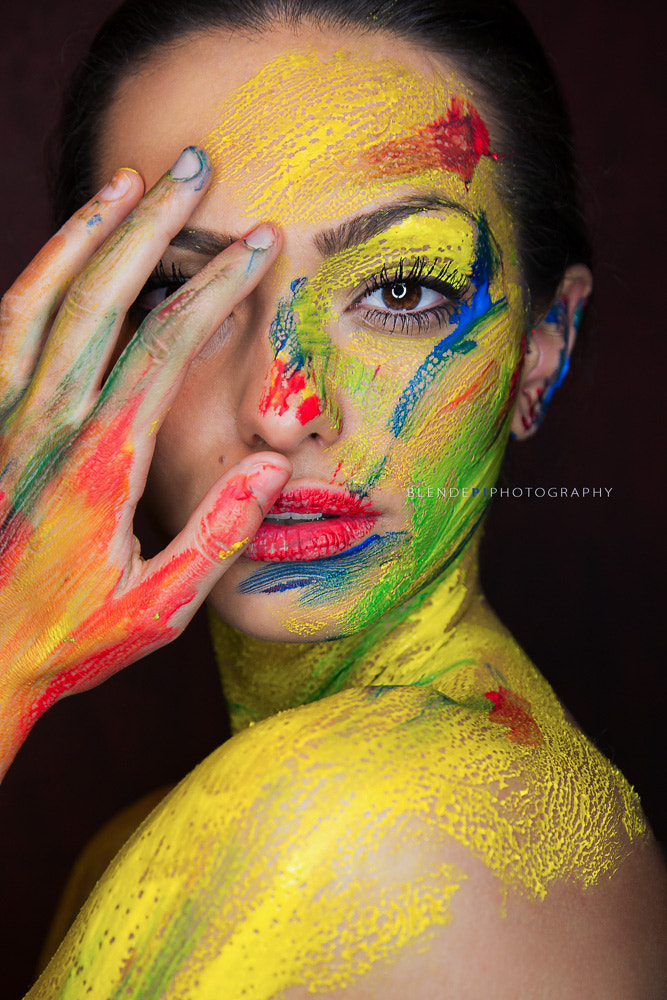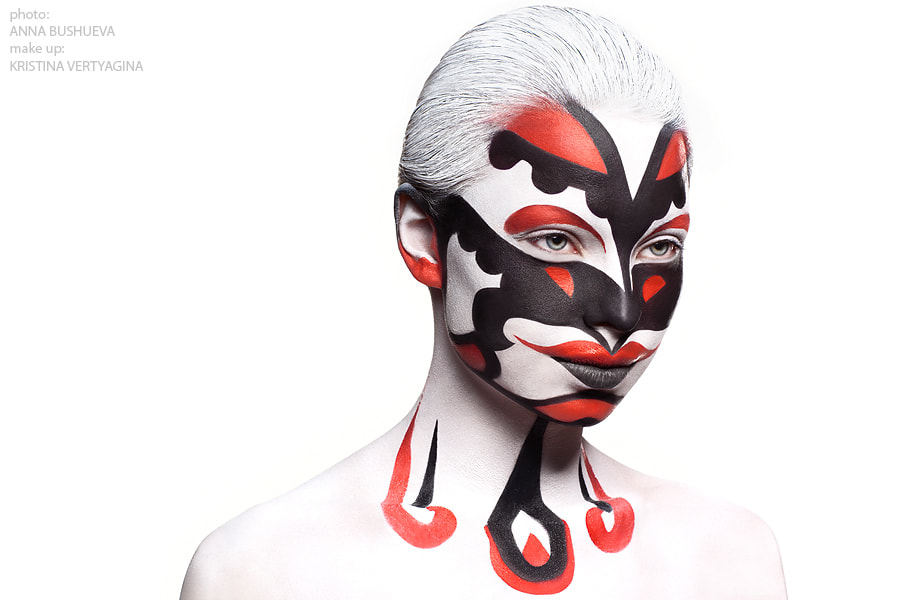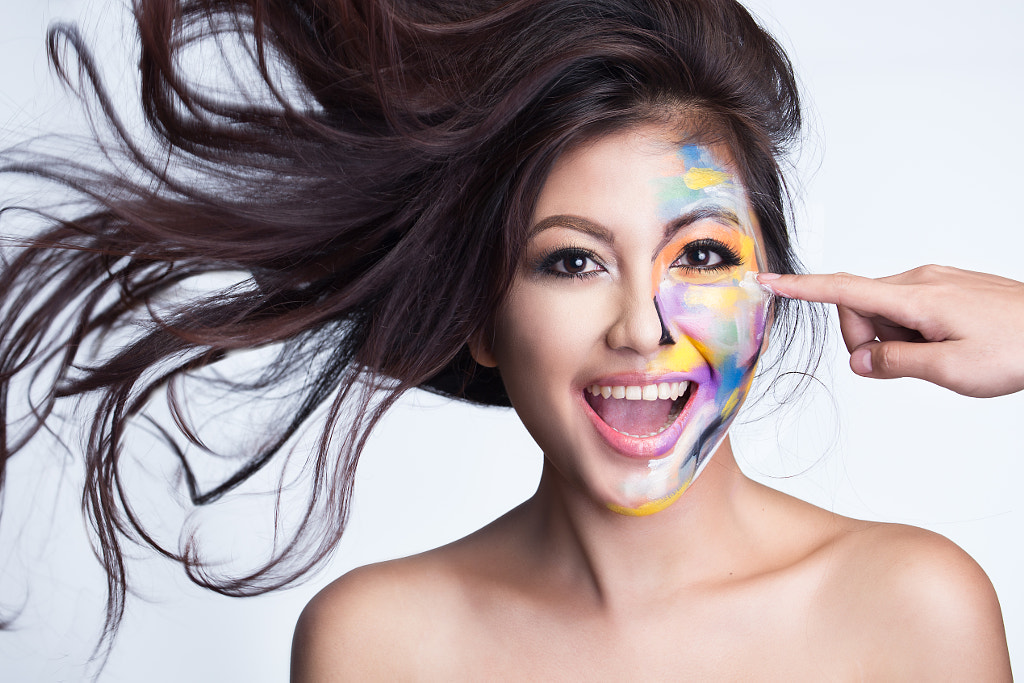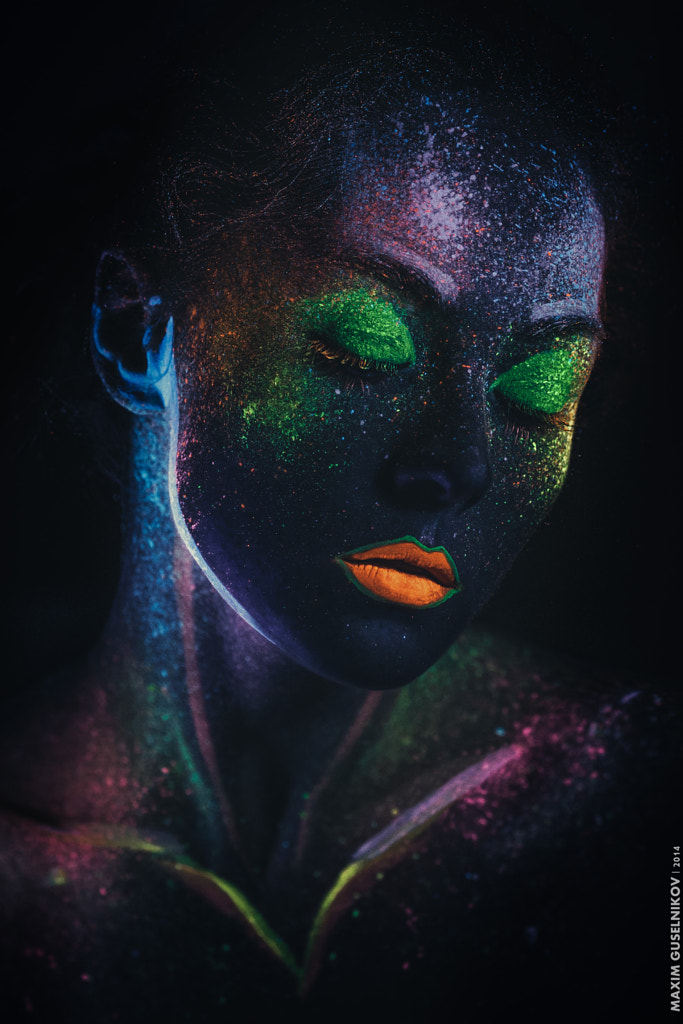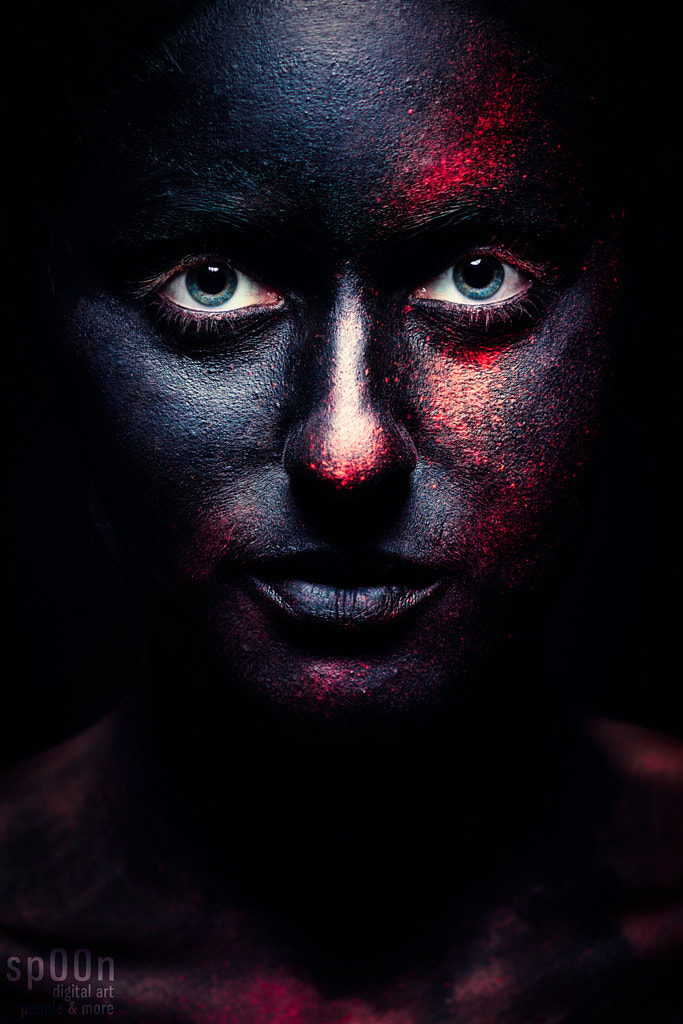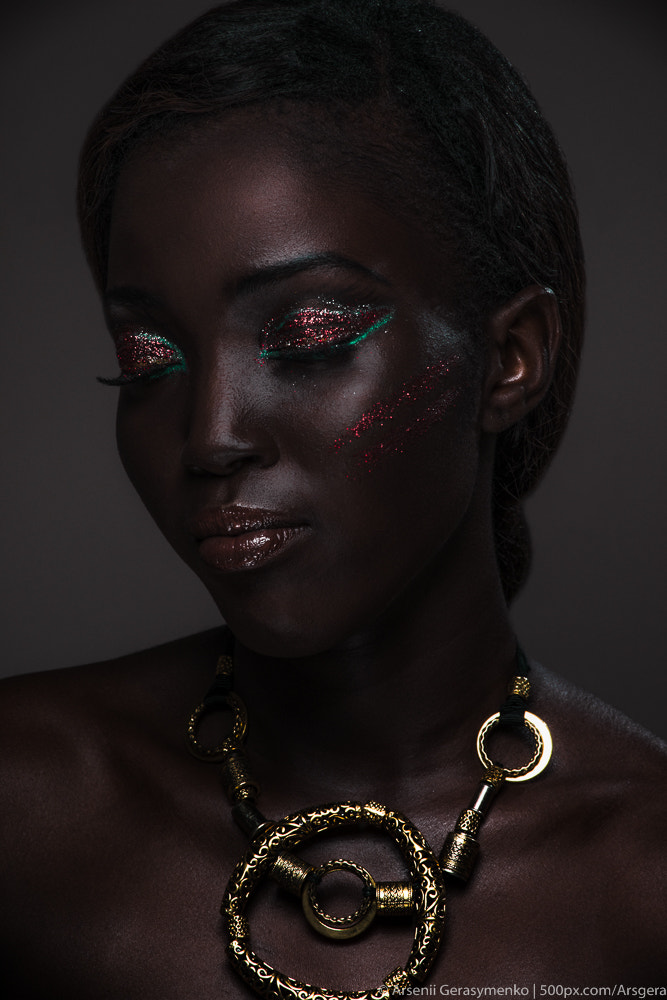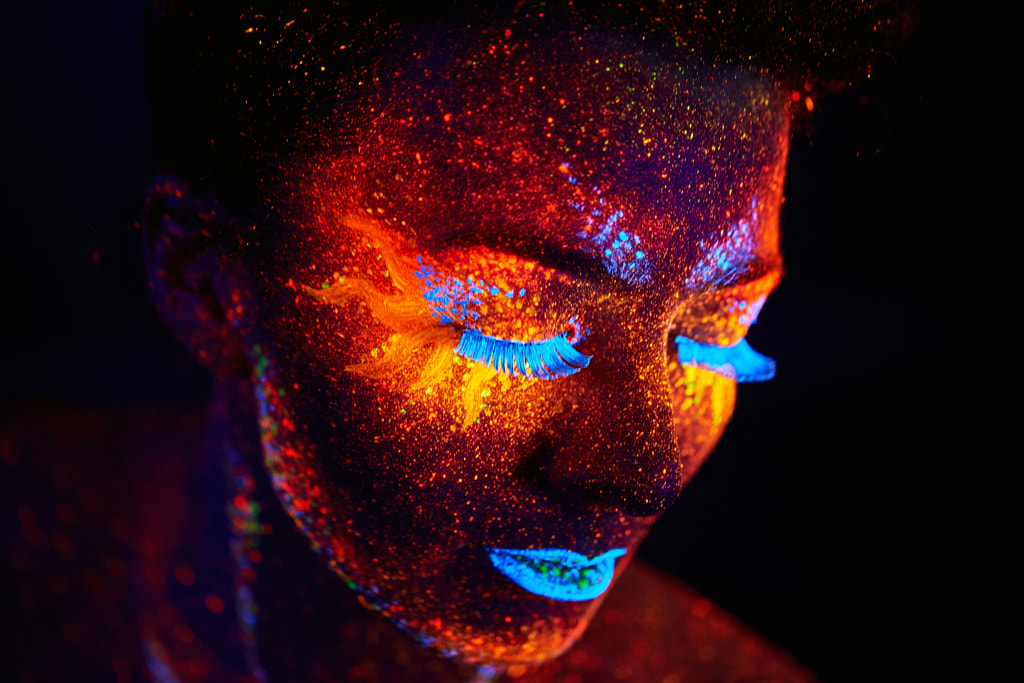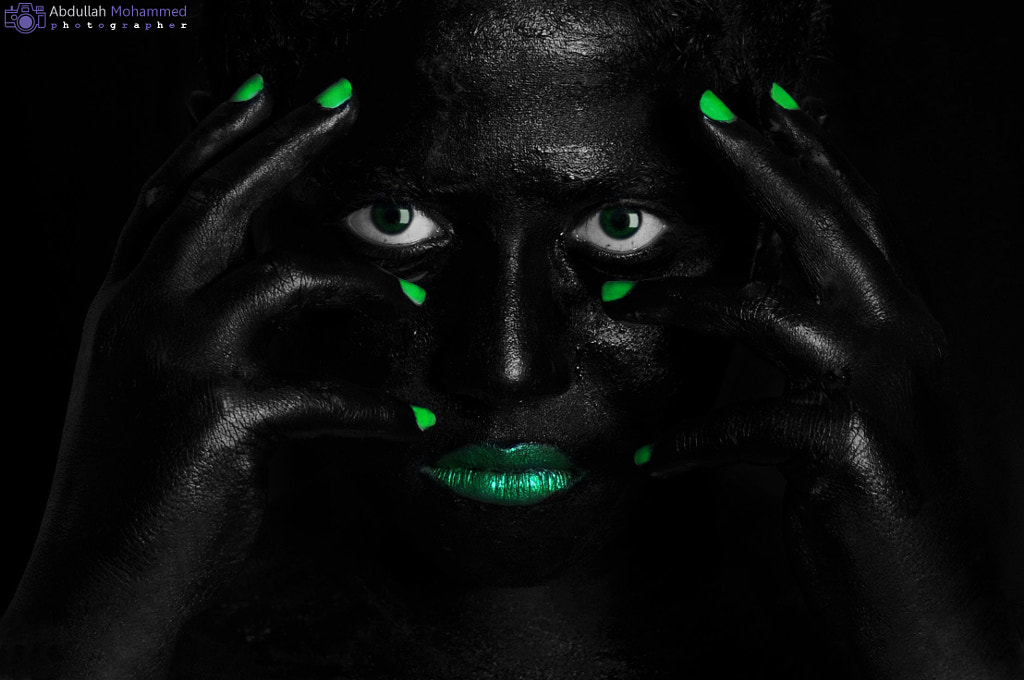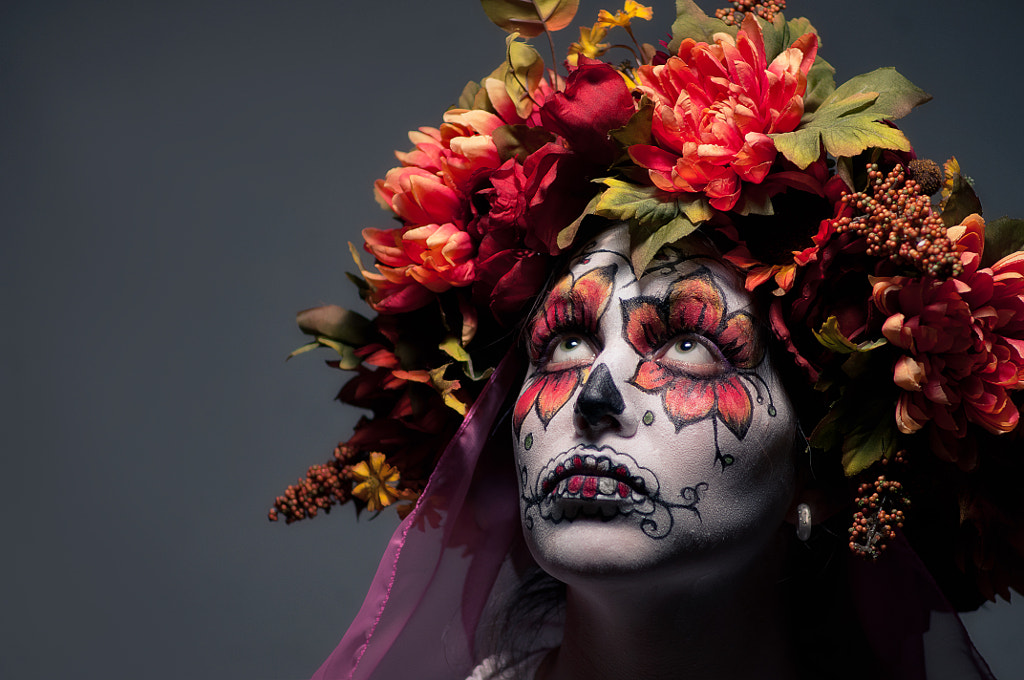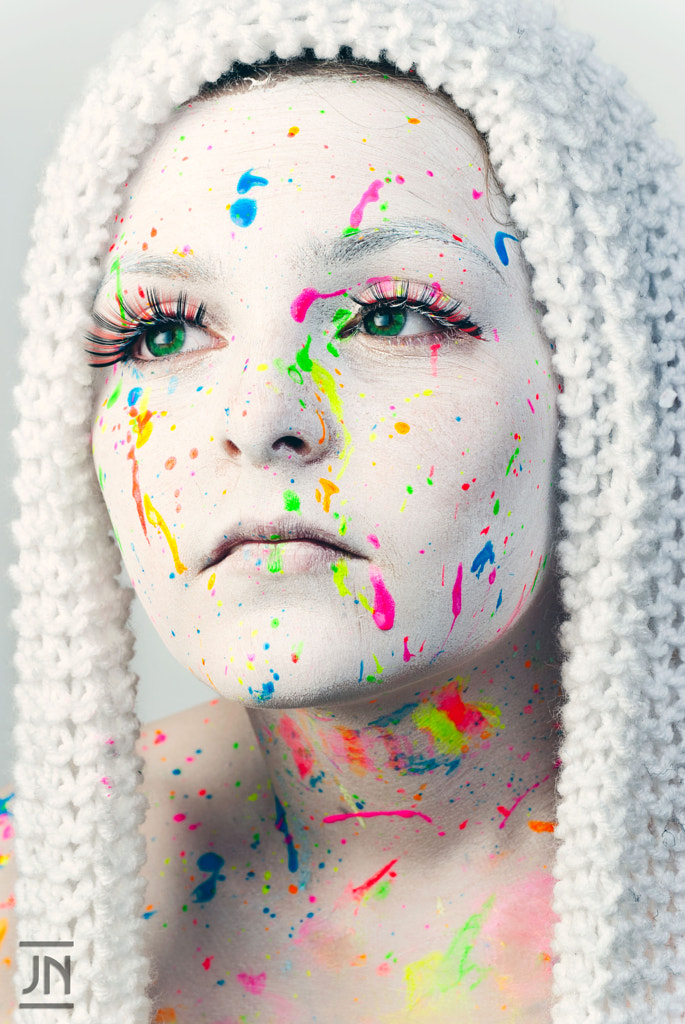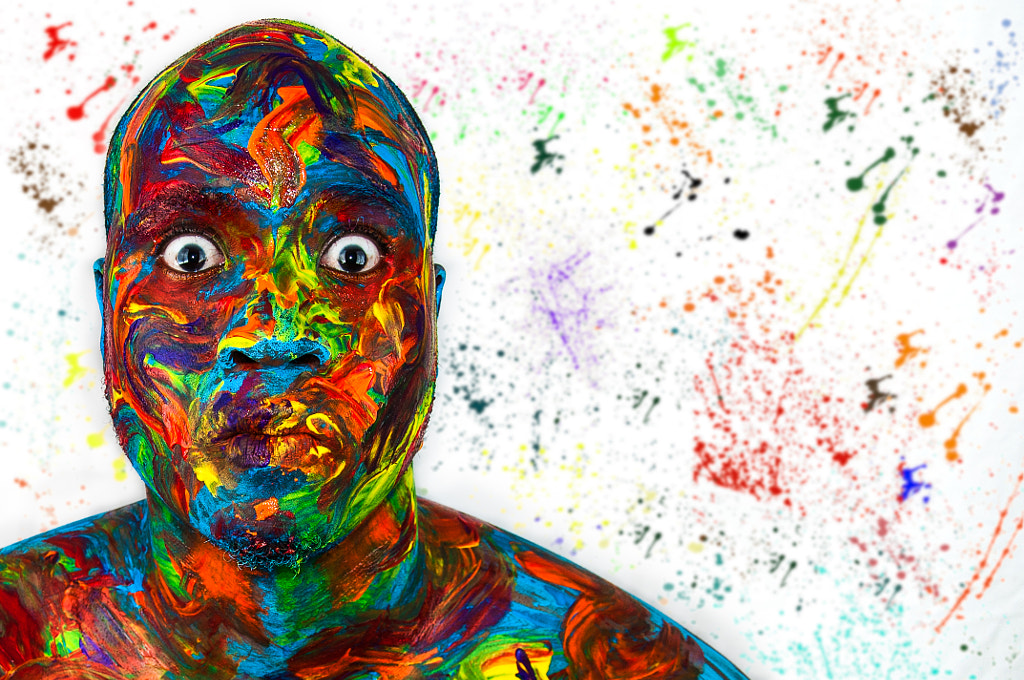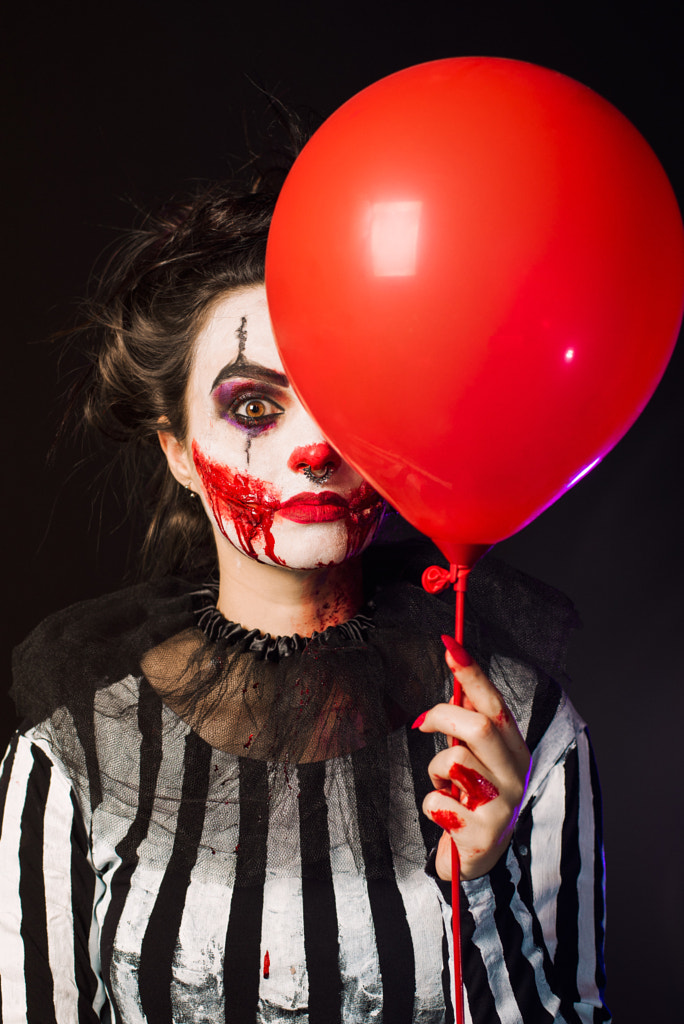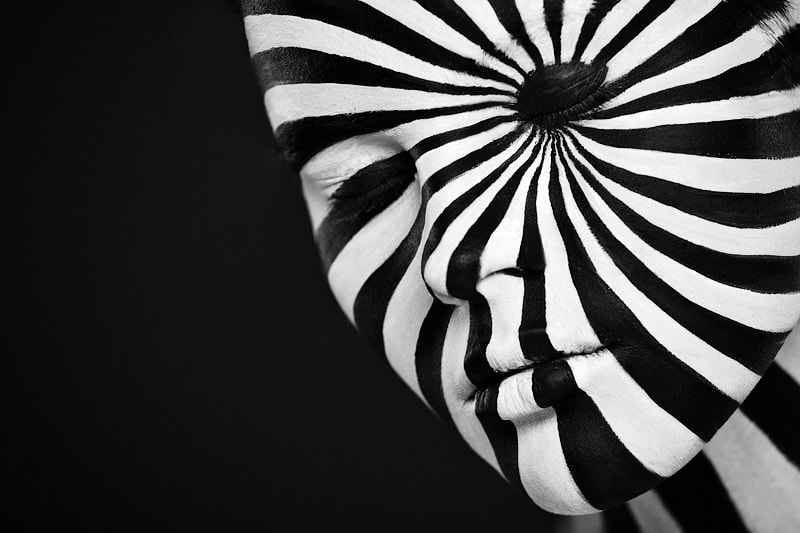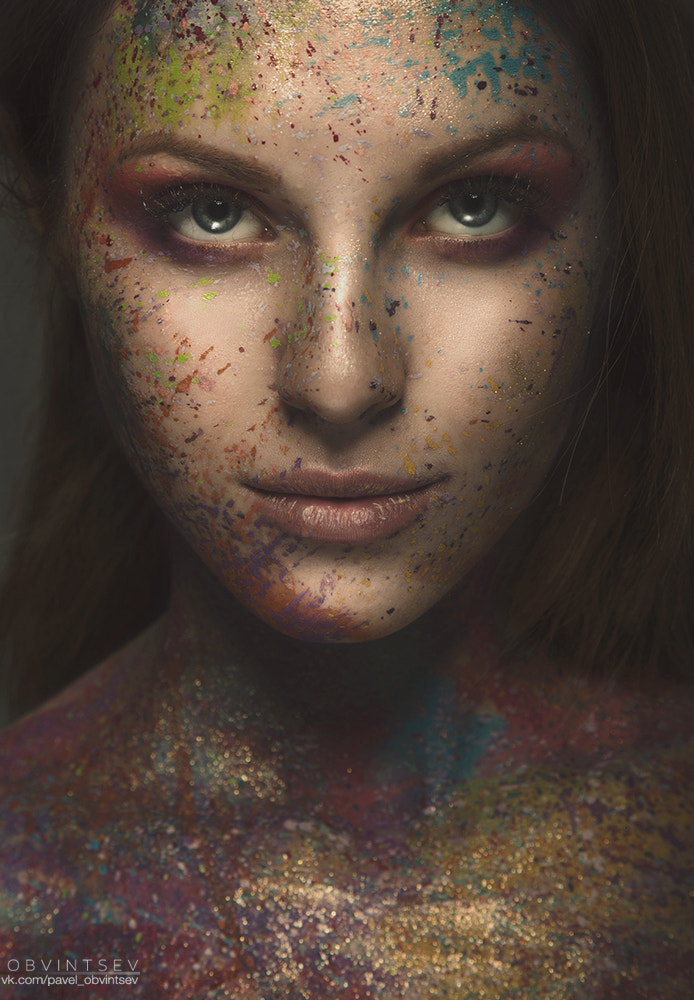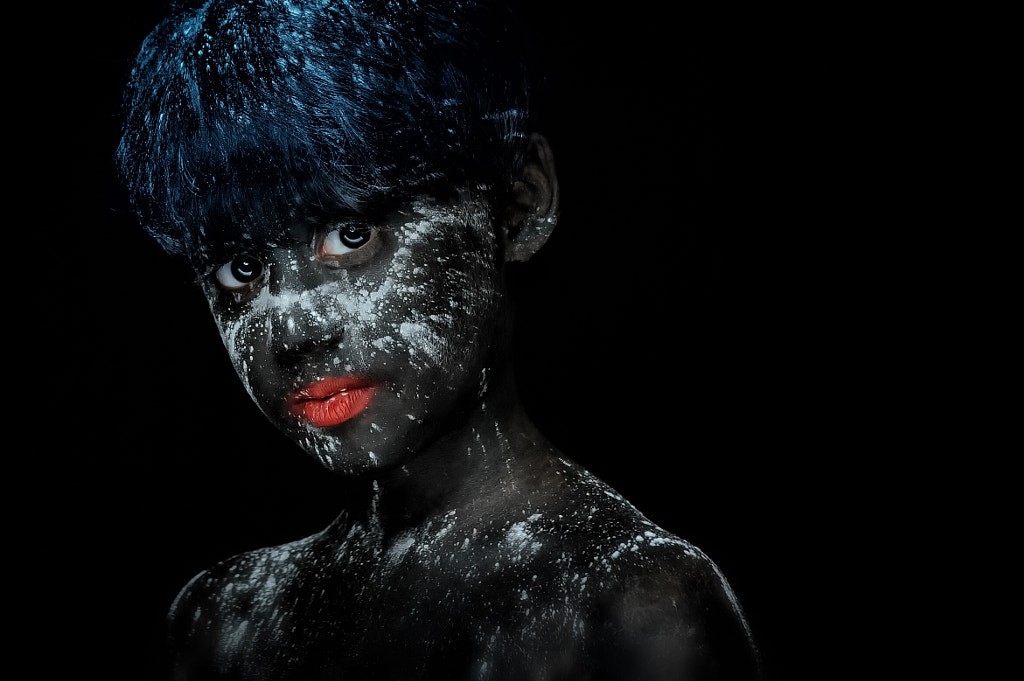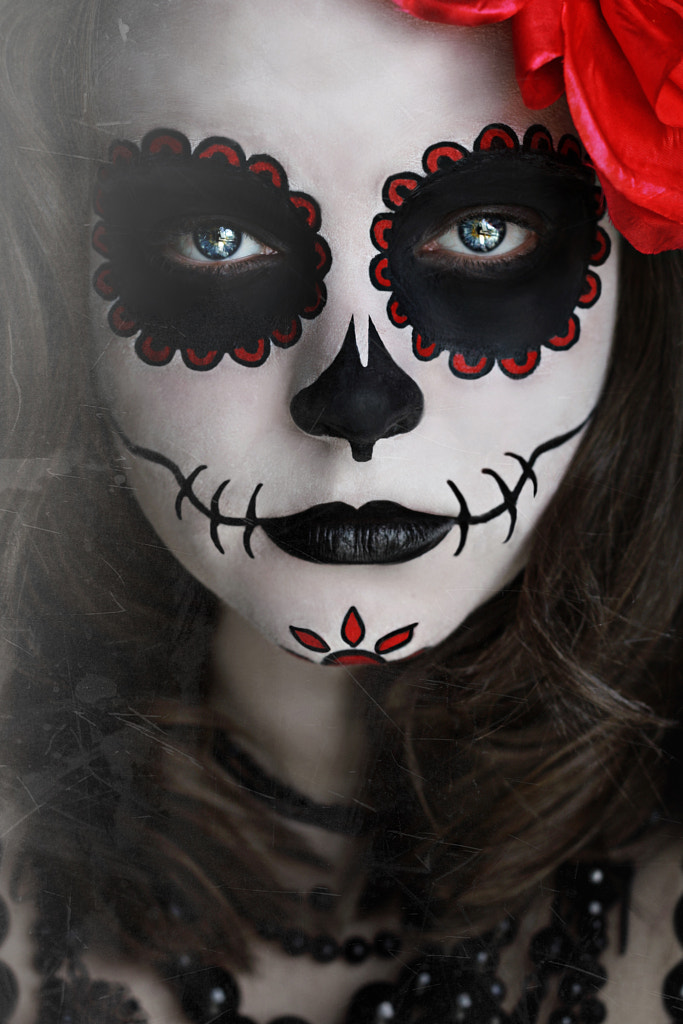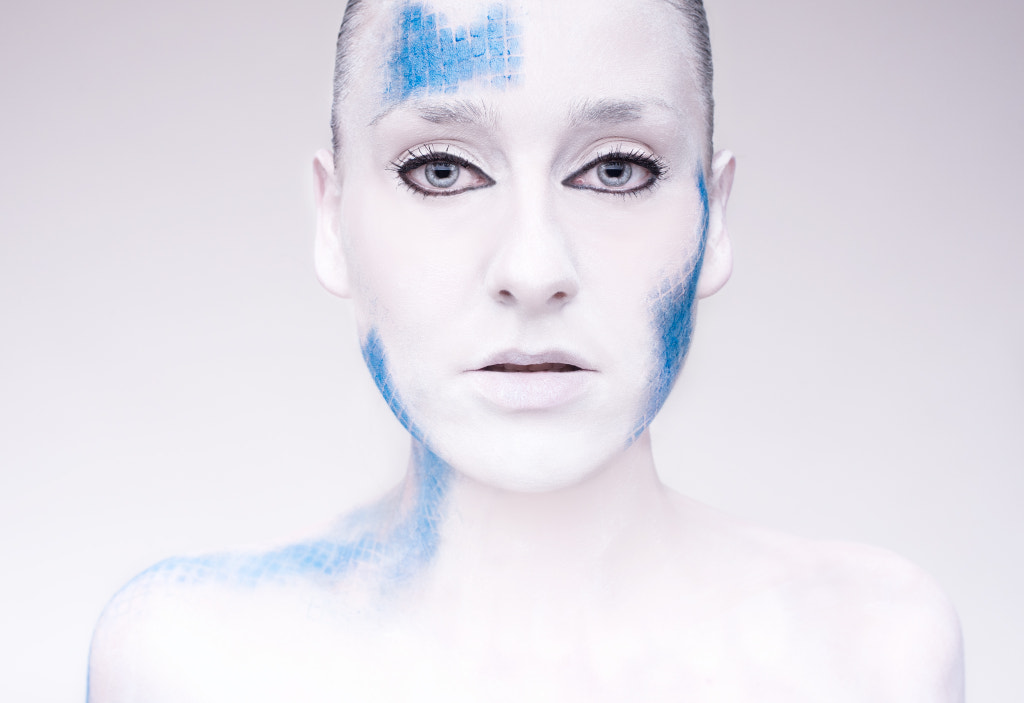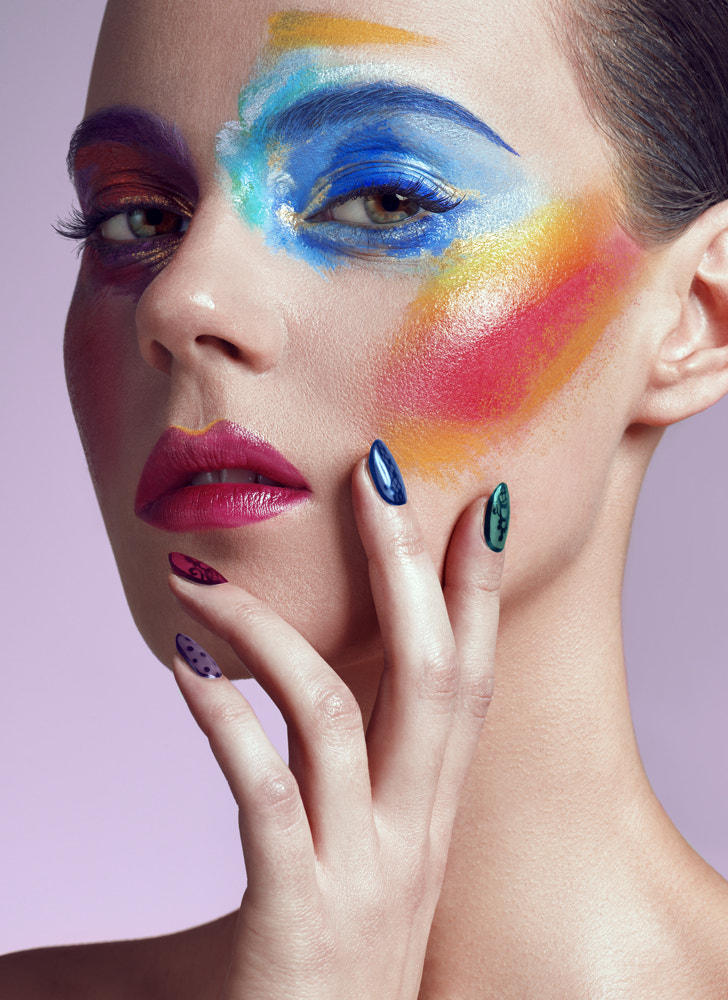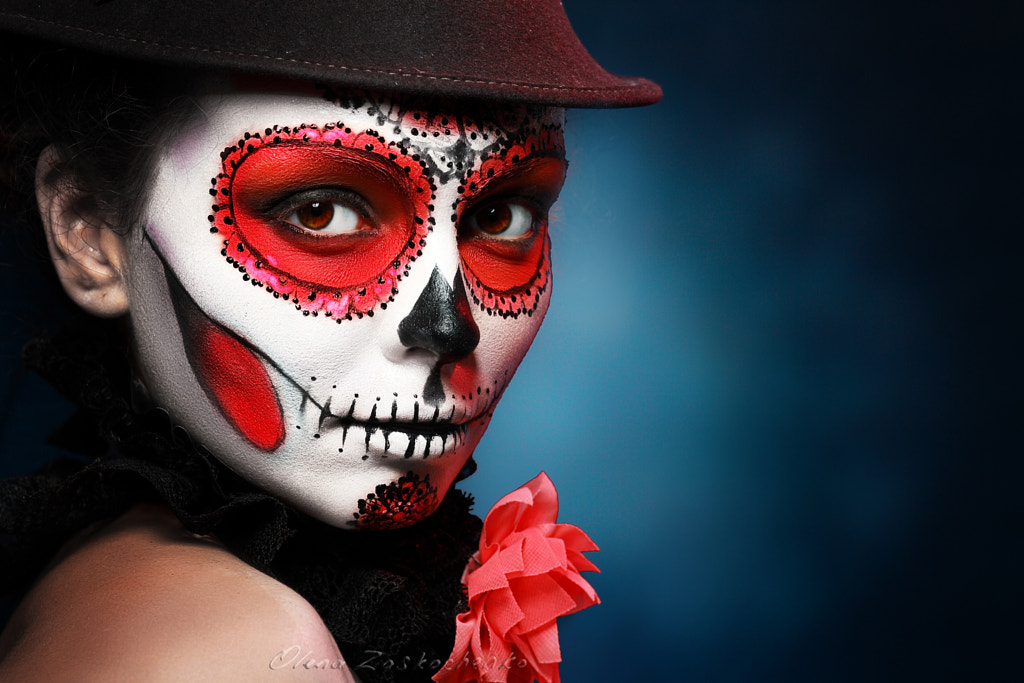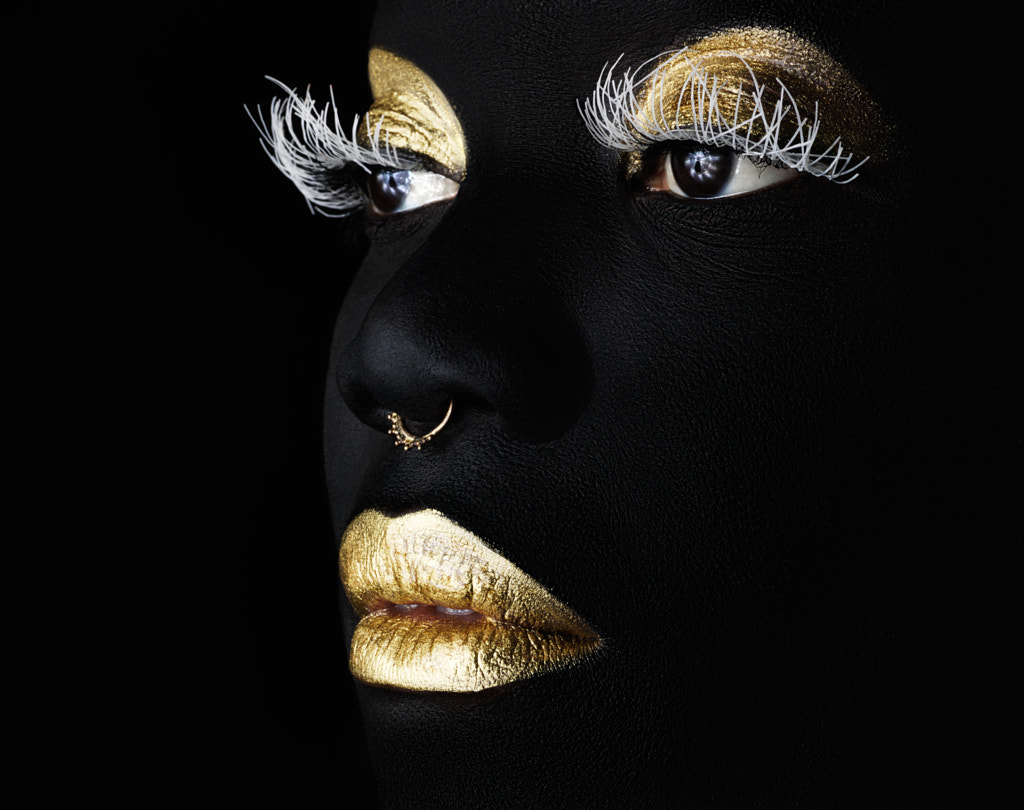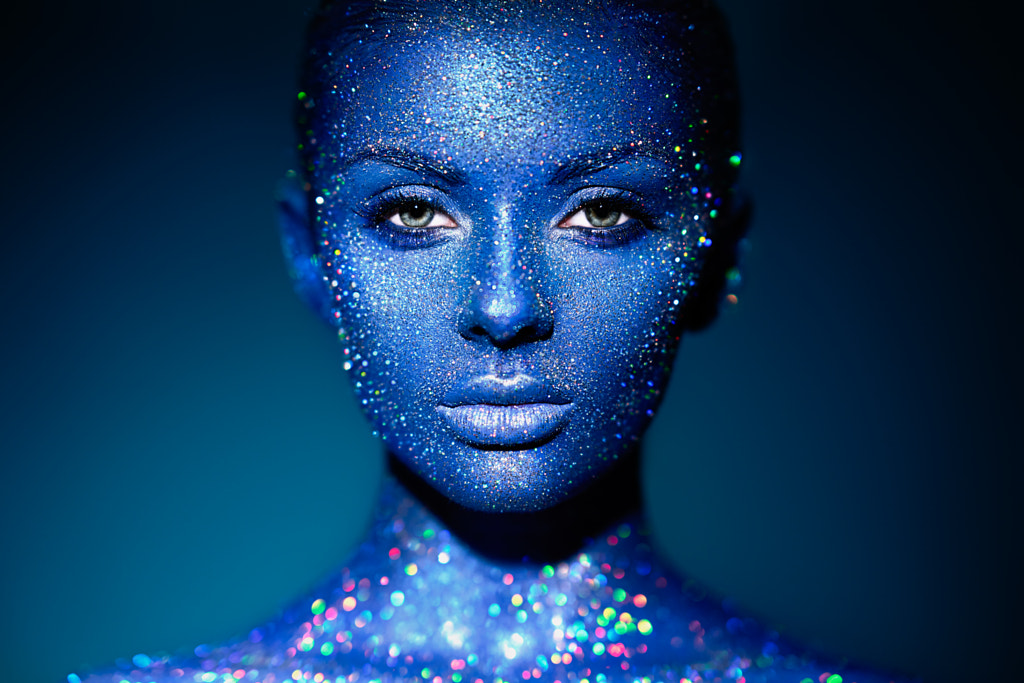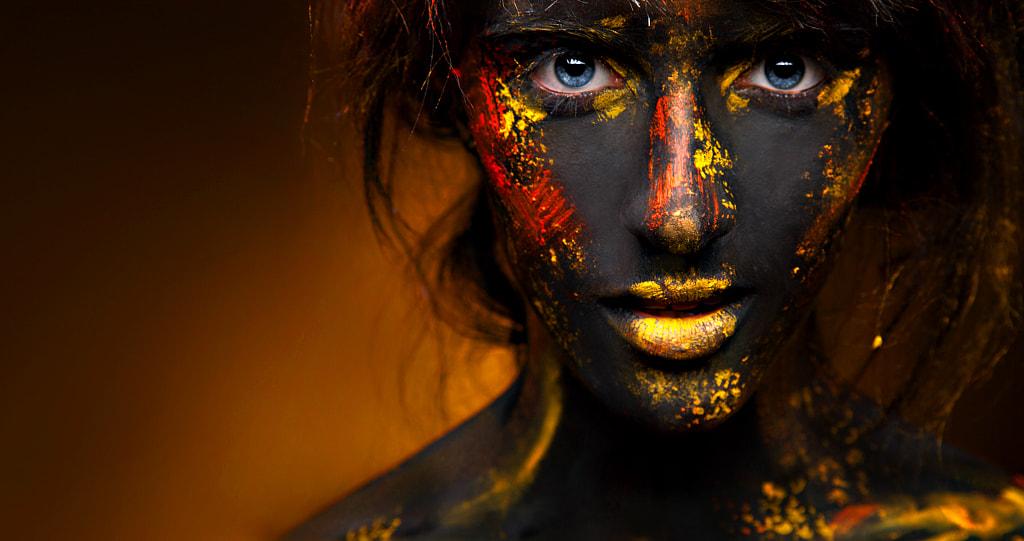From “galaxy makeup” to “festival glitter,” the last couple of years have ushered in some of the boldest trends in face and body painting. In 2019, searches for “body painting” went up by 444% on Pinterest, and as of this writing, a quick search for “face paint” on 500px results in 20,882 images from photographers around the world.
Face paint has been a fixture of fashion and art photography since Mario Testino first handed Kate Moss a box of face paints—resulting in one of the most iconic portraits of the 21st century—but in recent years, with the influx of influencers and artists working in all corners of the globe, creative makeup has reached new heights.
Here’s a look at just 50 offbeat, unexpected, eye-popping face painting photos, plus some of our tips for incorporating paint and makeup into your next shoot.
The photographer Alexander Khokhlov—a master of optical illusions and visual puns—teamed up with makeup artist Valeriya Kutsan to create this mind-bending mask portrait. In the past, he’s created works evocative of artists ranging from Leonardo to Roy Lichtenstein.
Alexander made this picture years ago, but he shared it again earlier this year, writing, “This is a challenging time for all of us. Every life is important. Every breath. Every heartbeat. Please, stay home and stay safe.”
Tip #1: Collaborate with a makeup artist Reach out to a makeup artist you trust and admire with your idea. Choose someone whose aesthetic fits the project you have in mind, and if they agree, send some reference photos. Share your ideas and moodboards, and invite them to weigh in with their own insights.
Make sure you outline beforehand what lighting you plan to use; they might have suggestions, and they might alter their plans to fit the lighting setup you have in mind. Once you establish a relationship with a makeup artist, you can work with them again and again and grow together as artists.
“This was the first time that a photo session lasted for a shorter period than the preparation and ‘cleaning’ after it,” the photographer Jacek Wozniak writes of this image, featuring the model Sandra Jaskólska with makeup by Blueyesmakeup. “The paint had to be applied with a makeup sponge so that no brushstrokes were visible—only the natural texture of the skin.”*
*Translated from the original Polish.
Jacek collaborated with his cousin Gosia, the model, to create this Día de los Muertos-inspired image. It was made using the freelensing technique, resulting in that controlled blur around Gosia’s signature tattoos. He chose to photograph her head-on to emphasize the symmetry of the makeup.
“Creating this series was so fun,” the photographer Rob Woodcox writes. “It took four hours for [the body painters at @treesphinx] and I to paint the models and then just 30 minutes of freezing cold to get the shots.”
Tip #2: Find inspiration We mentioned moodboards earlier, and these are an essential part of the creative process. After developing the theme for your shoot, pull some paintings, illustrations, and even sculptures that inspire you. Browse the web to see what other photographers have done before you—this guide to 10 Portrait Photographers You Should Follow Right Now on 500px is a good place to start.
For this session, Gilbert Asante, along with makeup artist Sandra Arthur Alexandrina, drew inspiration from the Nigerian Goddess Oshun. “She is the deity of the river and fresh water, luxury and pleasure, sexuality and fertility, and beauty and love,” the artist writes.
Arsenii Gerasymenko has photographed countless faces of all ages, from the Sadhus of Kathmandu to high-fashion editorial models—all with a unique and personal twist.
This photo by Tracy Parker provides a lesson in patience; it was the last of the set and also one of the strongest. The model, Amanda, developed the pose herself, resulting in a portrait that looks spontaneous and natural.
Before he was a portrait and fashion photographer, James Moxley studied life drawing and painting, an influence that can be felt in this watercolor-inspired piece with the model Steph Green and makeup artist Shanel Otto. Our tip: When working with face and body paint, learn about the properties of the medium for more control over the final image, even if you’re working with a makeup artist.
Tip #3: Learn the basics Even if you work with a makeup artist, it’s important to learn the basics of face and body painting. Knowing the difference between a brush and a sponge and knowing what products look best on camera can be the key to a successful shoot. In the beginning, follow along with the makeup artist, and don’t be afraid to ask questions or make suggestions.
In collaboration with makeup artists, Stanislav Istratov has used everything from pearls to flowers to foil to create surreal looks; this lava-inspired picture is part of his supernatural ‘Dark Art’ series.
The Manila-based fashion and beauty photographer Wilmark Jolindon regularly works with makeup artists, stylists, hair stylists, and more for his personal projects, creating a collaborative atmosphere on-set where out-of-the-box ideas can flourish.
Anna Bushueva’s portraits incorporate materials like floral details, jewels, UV face and body paint, and more. She’s also drawn inspiration from art history, teaming up with a makeup artist in 2015 to launch an exhibition around the theme of pop art.
Tip #4: Mind the details The face paint might be the starting point, but your wardrobe, background, and props all help bring your idea to life. Before any shoot, discuss clothing and accessories with your model, and put some thought into your background; an outdoor environmental portrait, for instance, will tell a different story than a studio shot.
When it comes to face paint portraits, less is usually more. Keep your styling simple so that the paint has a chance to shine. Finally, what kind of light will you use and how will it complement the paint? Perhaps you shoot with natural light during the golden hour (check out this natural light tutorial for tips), or maybe you choose a celestial theme with black light.
Benjamin Hartmann gives us a lesson in color theory by pairing saturated reds with the model Julia’s complimentary green eyes.
Abdullah Mohammed from Saudi Arabia got his start at the age of 14, experimenting with different techniques and bringing a youthful twist to the timeless genre of portraiture.
Tip #5: Direct your model The best face paint portraits tell a story; they bring fictional characters to life, illustrate folklore and mythology, or emulate iconic works of art. Give your model some acting prompts, or demonstrate poses you have in mind. Think like a director on a film set; provide some ideas and inspiration, and then let your model run with it and add their own interpretations.
Sometimes the most spontaneous and unexpected shoots leave a lasting impression; Robert Stebler made this La Calavera Catrina-inspired portrait after a day of face-painting with his wife Londa and daughter Effy.
As a self-portrait artist, Ricardo Williams knows his canvas better than anyone, can practice anytime he wants, and never runs out of fresh and original ideas.
Nick Chao draws inspiration from classical painting, fantasy movies, and video games, and he listens to music (soundtracks, symphonic metal, etc.) during retouching, giving his images a cinematic vibe.
Lauren Hughes is a self-portrait photographer, using creative makeup and post-processing to transform herself into mythical, fictional characters.
Tip #6: Think outside the box We’ve already mentioned the importance of understanding the basics of face painting, but once you know “the rules,” feel free to break them. Go big; the paint should be bolder than it might be in everyday life so it shows up on camera.
Experiment with unconventional materials and striking color palettes. Bring out the macro lens to capture the details of the paint, or come up with a concept you’ve never seen before, based on your favorite book or song.
Mahesh Balasubramanian, a photographer based in Chennai, India, often works in black and white, but sometimes, the colors of his surroundings are just too stunning not to capture, as was the case with this portrait from Kaveripattinam.
Beauty photographer Oleg Gekman used neon lights and bright sparkles to bring this idea to life, including the dazzling bokeh effect on the model’s neck.
Not on 500px yet? Sign up here to explore more impactful photography.
